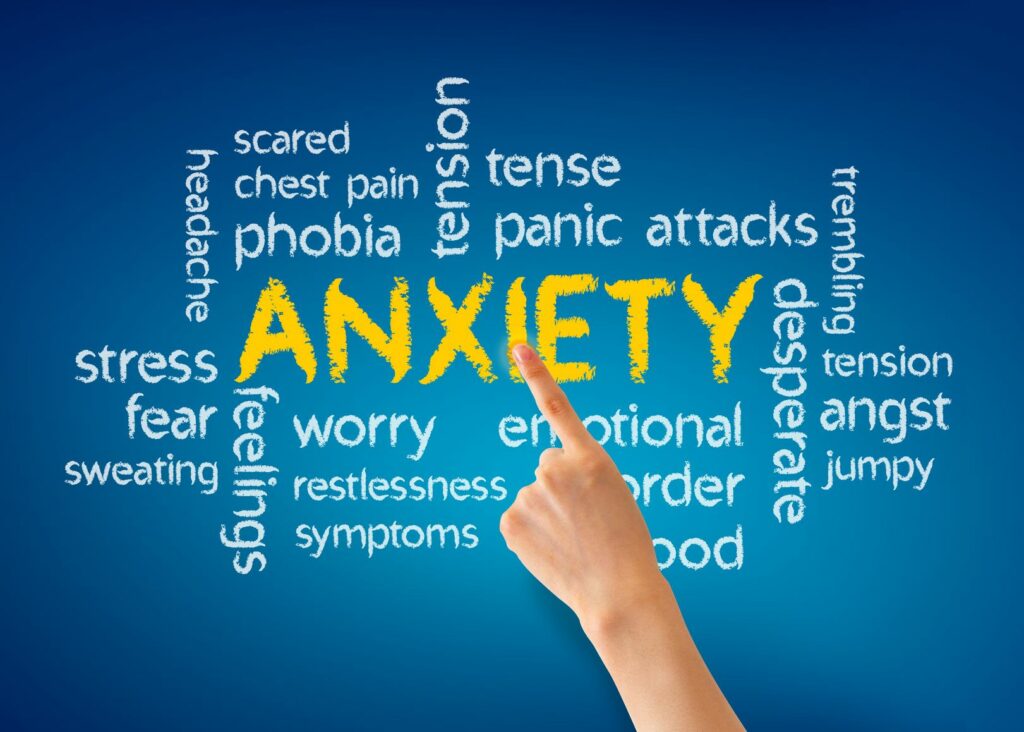The theme for Mental Health Awareness month, May 2023, is ‘Anxiety’.
Anxiety is a feeling of fear or unease. It is a natural human response to feeling under pressure or threatened and anyone can experience it.
Anxiety becomes a problem when it becomes intense or overwhelming and starts to interfere with daily life. In such cases, an anxiety disorder develops. The main types of anxiety disorders are generalised anxiety disorder (GAD), panic disorder, post-traumatic stress disorder (PTSD), social anxiety disorder and obsessive-compulsive disorder (OCD). Thankfully, there are treatments for these.
Anxiety tends to be prevalent in women than men. According to recent data from Institute of Health Metrics and Evaluation, approximately 3.94% of the global population has symptoms of a anxiety disorder. The World Health Organisation (WHO) found that, in the first year of the COVID-19 pandemic, the prevalence of anxiety rose by 25%. What is clear is that recent events and increased stressors, e.g. financial worries, war, conflict, suffering, etc. are leading to higher levels of anxiety across the world.
Common symptoms of anxiety include:-
- Feeling tired
- Irritable
- Unable to concentrate
- Difficulty sleeping
- Headaches
- Stomach aches or nausea
- Muscle aches and pain
- Dry mouth
- Increased heart rate
- Confusion
- Restlessness
- Feeling like you can’t stop worrying
- Rumination – thinking about bad experiences or thinking constantly about a situation

Anxiety can be challenging to manage especially in the workplace. Anxiety can manifest itself in the workplace in some of the following ways where the person –
- Withdraws socially,
- Experiences insomnia,
- Appears more confrontational,
- Has decreased productivity due to their physical and emotional symptoms,
- Has more frequent colds and infections due to a weakened immune system associated with increased cortisol levels in the body.
Anxiety accounts for around 50% of working days lost per year. Not only does it make financially sense for an employer/organisation to seriously address anxiety in the workplace, it is also the best approach to improve the health and well-being of the workforce. Great organisations that are committed to investing in their employees create healthy environments to enable people to reach their full potential.
It is very important for organisations to educate all employees including managers on anxiety and its impact on the workplace as well as train line managers on how to support employees, make any reasonable workplace adjustments where possible and signpost to professional help. Organisations can have Employee Assistance Programmes (EAPs) which offer advice and counselling.
Also, organisations can be doing the following:-
- Promote healthy behaviours and exercise
- Provide people with adequate training and support to do their jobs well
- Ensure that systems are compatible with different ways of working
In addition, it is crucial that a line manager:-
- Gets to know each employee in their team and understands their circumstances
- Find out what works best for them
- Practises self-care and models healthy behaviour
- Encourages employees to take regular breaks and annual leave/vacation
- Has realistic work expectations and regularly review workload and responsibilities
What does your organisation do to support those employees with anxiety? What else would you like them to do?
Jolene King is Principal Consultant of 246 King Consulting (https://246king.com). She is an Occupational Psychologist, experienced Human Resources professional, qualified Mental Health First Aider, mental health advocate and is trained in mental health conditions and exercise, health and nutrition. She can be reached at jking@246king.com.
